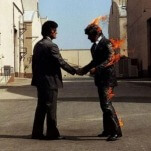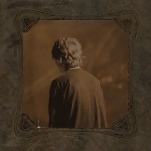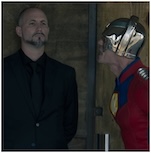Is Splitsville the First Actually Funny Movie About an Open Relationship?

The comedies of Michael Angelo Covino and Kyle Marvin teeter on the edge of a void. They have a physicality that goes beyond slapstick, into a kind of gymnastics routine where the movie itself is doing the most impressive stunts. At one point in Splitsville, a friendship detonates from a betrayal, just as it did in their previous Covino-directed project, The Climb. In the newer film, Carey (Marvin) and Paul (Covino) come to blows, and their fight scene hurtles on well past the point of reason, eventually laying waste to multiple rooms of Paul’s well-appointed (second?) home, neither man quite managing to decisively triumph over the other. There are pauses for remnants of best-bro advice (“You gotta stop throwing haymakers,” Carey, a gym teacher, tells his friend after a few spectacularly missed swings), and a momentary side quest to save some fish (from their own impulsive stupidity). The unflagging dedication suggests men who have watched too much John Wick and internalize that series’ muchness. At a certain point, it feels like they might keep attacking each other forever.
To be fair, Carey has slept with Paul’s wife. On the other hand, Paul and Julie (Dakota Johnson) are in an open marriage. And on the other other hand, Carey should probably see Julie as out of bounds. Still, Julie feels that Paul is exercising that openness perhaps more vigorously than she is, and Carey has recently gone through a break-up of his own when his wife Ashley (Adria Arjona) expresses dissatisfaction over all the stuff she hasn’t tried, the men and women she hasn’t been with. (Her moment of clarity is spurred on by a startling scene that really highlights how abyss-adjacent the film is willing to go.) Upon hearing her request for a divorce, Carey jumps out of their (non-moving) car, which has been en route to Paul and Julie’s house, and treks the rest of the way himself. It appears to be a journey of at least five or six miles, and involves traversing a lake. Perhaps Julie sees dedication there, no matter how misguided.
You may have taken note that Carey and Paul are both married to characters played by stunningly beautiful Hollywood actresses. The movie seems aware of this, too. Carey has a slightly hangdog first-husband vibe that Marvin eventually nurtures into a demonstration of genuine sweetness. (It’s a neat trick that at first Ashley’s desire to leave seems understandable to the point of predictability, and less so as we learn more about both of them.) Paul, played with a fearless aura of unpleasantness by director Covino, has less to recommend him, though he is rich. The greater implausibility of Splitsville rests not in its romantic couplings, but its platonic besties who seem like they should have grown apart years or possibly decades earlier. Unlike The Climb, which focused more intently on male friendship, the kinship between the two men doesn’t feel as firmly built into the movie’s rigorously constructed sections.
Both movies proceed in chapters, and though each sequence of Splitsville is not presented in a single take as The Climb is, Covino and cinematographer Adam Newport-Berra remain dedicated to using the camera (and the depth of 35mm celluloid) as part of the comedic action. How and where the characters appear in frame is as meaningful and funny as what they’re actually doing. The movie also finds new uses and challenges for the single-shot aesthetic: A sequence depicting the passage of time in the apartment still shared by Ashley and a stubborn Carey unfolds through a series of unbroken shots fused together to create a continuous, ever-moving timeline of characters moving in, out of, and through the space.
-

-

-

-

-

-

-

-

-

-

-

-

-

-

-

-

-

-

-

-

-

-

-

-

-

-

-

-

-

-

-

-

-

-

-

-

-

-

-

-








































